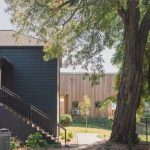Think back for a moment, how many of your core memories with your loved ones are associated with a home lawn? Whether it’s the jolly old outdoor play times with your parents, kids, or pets or the fabulous, love-filled outdoor parties and barbeques, a big portion of the good times in our lives are associated with our lawn!
No wonder having a green, healthy, and vibrant lawn is every American homeowner’s dream! Not only does a lawn have sentimental value, but it’s the first thing people see when they enter your house, playing a major part in giving a good impression. In addition to that, the general appearance and health of your lawn have a considerable impact on your residential property’s general value!
But proper and effective lawn care is not something easy. There are a lot of things that go into growing the ideal, lush green lawn with a thick grass carpet. One of the most significant of these is fertilizing.
Lawn fertilizers provide your grass and plants with all the essential nutrients they need to develop optimal health and a vibrant green look. The type and the time and season to apply fertilizers play a major role in how the results will turn out! Let’s discuss the ideal time to fertilize your lawn for the best results!
What Is Lawn Fertilizing?
The process by which we feed essential nutrients to the lawn for the optimal health and growth of its grass, plants, and trees is called lawn fertilization. A variety of different fertilizers are used periodically (at set times and seasons) in this procedure.
The soil has different qualities (porosity, water retention ability, optimal soil pH, etc.) and natural minerals (called nutrients) that support the perfect health and growth of plants. However, due to environmental factors, pollution, toxins, weather conditions, and man-made reasons, these qualities degrade, and the nutrients dry out after some time. This is why fertilization is important, as it replenishes nutrients and revives soil health.
Major Types of Lawn Fertilizers
Based on their state, fertilizers are divided into liquid fertilizers, powder fertilizers, crystal fertilizers, granulated fertilizers, and solid fertilizers. However, on the basis of their nature and origin, fertilizers are divided into two general categories. These are organic and synthetic fertilizers.
Fertilizers commonly contain three essential nutrients that are used in different plant processes for optimal growth and development. These three nutrients are nitrogen, phosphorus, and potassium, also known as NPK.
An interesting and useful piece of information is that every fertilizer bag you come across will have a specific three-number code, such as 12-20-45, 20-20-20, or 15-20-10. A lot of people don’t know the meaning of these digits, but these numbers are actually the amount of NPK or nitrogen, phosphorus, and potassium in that bag of fertilizer. A soil test usually tells which kind of fertilizer would be suitable for certain soil.
Organic Fertilizers
These fertilizers are made of organic matter such as manure, microbes, compost, blood and bone content, animal feces, etc. These fertilizers are environmentally friendly, slow-acting, and improve the overall soil quality over time. In addition to that, organically-made fertilizers are safe to use around pets and children.
Synthetic Fertilizers
Synthetic fertilizers are made artificially in the lab from different chemicals. A lot of different waste materials, such as plastic bottles, cans, polythene bags, etc., are used in the making of synthetic fertilizers. These fertilizers contain nitrogen, potassium, and phosphorus in set percentages, and a soil test is used to determine which synthetic fertilizer would be suitable for certain soil based on its deficiency.
The Importance of Timing in Applying Fertilizers
Fertilizers are actually nutrient-rich food for your lawn, which help its grass and plants grow rapidly and develop a vibrant color. The time and season of fertilizer application have major significance as plants are dormant in some seasons, whereas they grow rapidly in others. Applying the fertilizers straight, without considering the timing, would not generate the desired results.
The start of spring is usually considered the best time to spread fertilizers as the grass is in its growing stage, and the nutrient-rich fertilizers help it develop strong roots and a vibrant green color. Moreover, a well-spread root system throughout the lawn bed will also prevent weeds from growing.
Where seasons are important to keep in mind when fertilizing, the general timing should also be selected carefully. Experts suggest that the best time to spread fertilizers in your lawn is early morning, as the dew makes the soil bed moist. It is suggested to avoid fertilizing during the day, especially in summer, as the fertilizer can burn the dry grass blades.
Another great tip is to water your lawn a couple of days before spreading the fertilizers. This will soften the soil bed of your lawn, allowing easy and quick absorption.
The 7-Round Lawn Fertilization Program
Experts recommend fertilizing the lawn 7 times throughout the year for the best results. This is called the 7-Round lawn fertilization program, and it includes a total of 7 fertilization procedures in carefully determined seasonal timings around the year.
The program recommends fertilizing the lawn at the beginning of spring, late spring, early summer, mid-summer, late summer, early fall, and late fall. Let’s discuss these rounds and their importance in detail.
Round-1 Early Spring
The beginning of the spring season is generally considered the best time for fertilization. This is when the grass and plants wake up from their dormant stage and begin their growth. They are nutrient-hungry at this stage, and providing them with their food will boost their growth.
Moreover, this is the time when environmental conditions such as temperature, sunlight, and humidity are ideal for growth, making it the perfect fertilizing season. This is also the best time for fertilizing newly planted trees and shrubs.
Round-2 Late Spring
The second round of fertilization comes in late spring. Unlike the program’s first round, where we focused more on giving the grass nutrients for growth and development, in the second round, we focus primarily on cutting and demoting weed growth. The fertilizers we use in this round are rich in herbicides, which prevent unwanted weeds from germinating and sprouting.
Round-3 Early Summer
Early summer is the second best time to spread fertilizers. The growth is considerably fast during this time. In this round, we feed the grass fertilizers that give it a vibrant green color and nutrients that keep it safe in the scorching summer heat.
Round-4 Mid Summer
The fourth round of fertilization that comes around the time of mid-summer focuses more on pest control. During this time, pesticides are sprayed on the lawn to prevent colonies of insects from growing and damaging the plants. Moreover, liquid fertilizers are also used to keep the grass vibrant till autumn.
Round-5 Late Summer
The 5th round of the 7-round fertilization program centers on improving the overall soil health. Organically made fertilizers such as manure are used in this round, which enhance the quality of the soil. In addition to that, nitrogen-rich fertilizers are also applied in this stage.
Round-6 Early Fall
Early fall is the time when temperatures start to decrease drastically. During this time, such fertilizers are sprayed that helps the grass and lawn plants develop tolerance to extremely low temperatures and maintain their vibrancy and color.
Round-7 Late Fall
The last round of the 7-Round program is performed around late fall. It revolves around seeding and general maintenance of the lawn. Seeds are spread during this time. In addition to that, the beds are maintained, plants are pruned, and the tree shoots are trimmed.
Do It Yourself or Employ a Professional Lawn Fertilizing Service – What Is Better?
When fertilizing your home lawn, you have two choices: either do it yourself or employ a professional lawn fertilizing service. A lot of homeowners prefer doing maintenance on their property themselves. However, fertilizing is a complex task, and there are a lot of things that should be taken care of for the best, desirable results. We recommend leaving it to a professional, experienced, and well-reputed lawn fertilizing service such as A-Z Landscaping!
A-Z Landscaping is a recognized and well-trusted lawn maintenance and fertilizing company that has been in the business for over 40 years! The business boasts hundreds of satisfied clients, and you can check out their amazing reviews on A-Z Landscaping’s official website. Its well-trained experts will treat your lawn with the utmost care, making sure that you get the best possible experience with them!
You can also contact the service if you have any questions, such as how to fertilize indoor plants, when to fertilize trees and shrubs, how to fertilize plants naturally, etc., for expert guidance.
Final Thoughts – The Importance of Timing: When to Apply Fertilizer for Best Results
Fertilizers are nutrient-rich food for your lawn that help its grass and plants grow and flourish. The timing and season of applying the fertilizer matters greatly as plants go through different stages throughout the year. We have discussed the importance of timing in fertilizing and the ideal seasonal times to spread fertilizers for the best results.






